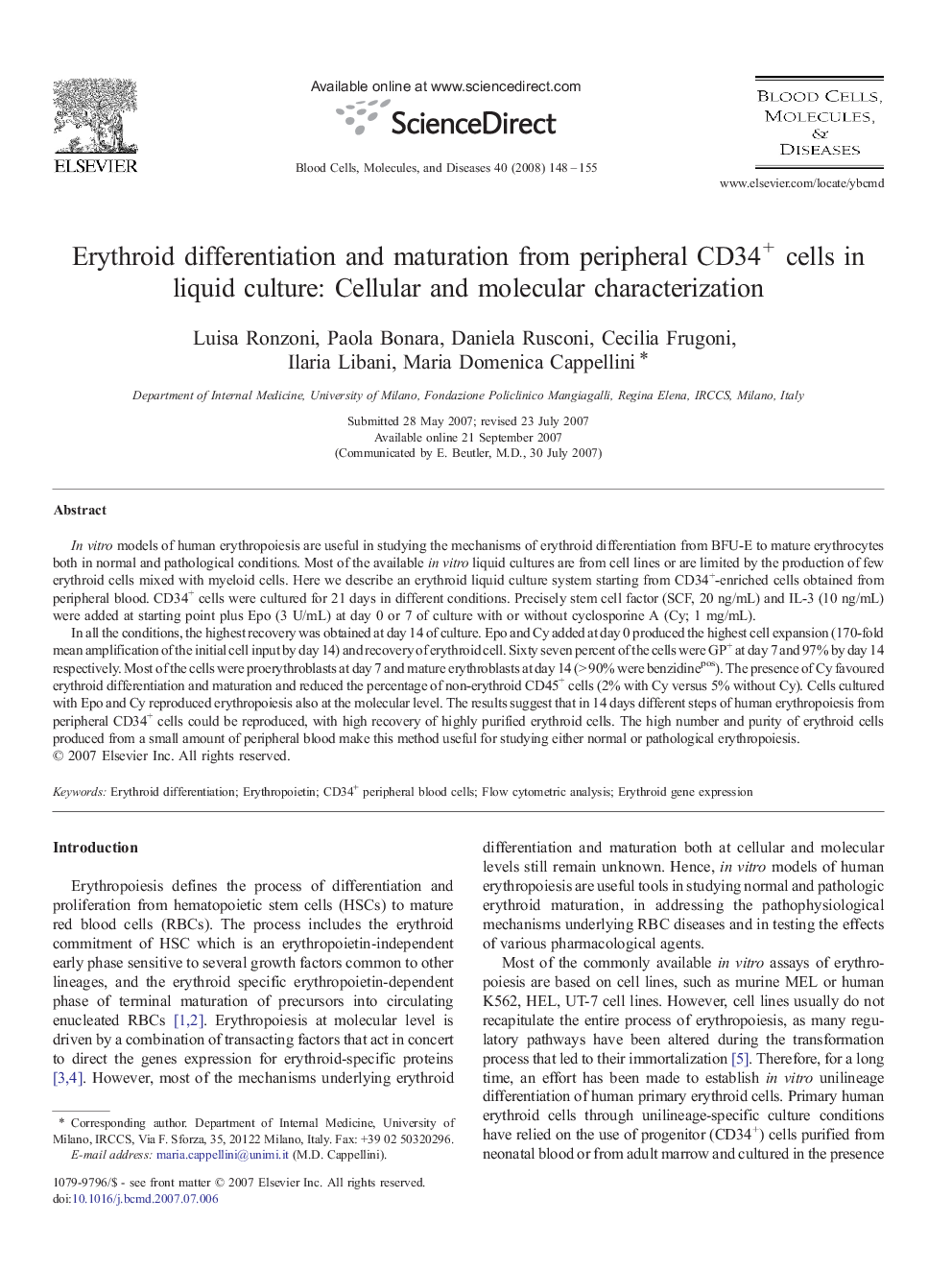| کد مقاله | کد نشریه | سال انتشار | مقاله انگلیسی | نسخه تمام متن |
|---|---|---|---|---|
| 2827976 | 1162474 | 2008 | 8 صفحه PDF | دانلود رایگان |

In vitro models of human erythropoiesis are useful in studying the mechanisms of erythroid differentiation from BFU-E to mature erythrocytes both in normal and pathological conditions. Most of the available in vitro liquid cultures are from cell lines or are limited by the production of few erythroid cells mixed with myeloid cells. Here we describe an erythroid liquid culture system starting from CD34+-enriched cells obtained from peripheral blood. CD34+ cells were cultured for 21 days in different conditions. Precisely stem cell factor (SCF, 20 ng/mL) and IL-3 (10 ng/mL) were added at starting point plus Epo (3 U/mL) at day 0 or 7 of culture with or without cyclosporine A (Cy; 1 mg/mL).In all the conditions, the highest recovery was obtained at day 14 of culture. Epo and Cy added at day 0 produced the highest cell expansion (170-fold mean amplification of the initial cell input by day 14) and recovery of erythroid cell. Sixty seven percent of the cells were GP+ at day 7 and 97% by day 14 respectively. Most of the cells were proerythroblasts at day 7 and mature erythroblasts at day 14 (> 90% were benzidinepos). The presence of Cy favoured erythroid differentiation and maturation and reduced the percentage of non-erythroid CD45+ cells (2% with Cy versus 5% without Cy). Cells cultured with Epo and Cy reproduced erythropoiesis also at the molecular level. The results suggest that in 14 days different steps of human erythropoiesis from peripheral CD34+ cells could be reproduced, with high recovery of highly purified erythroid cells. The high number and purity of erythroid cells produced from a small amount of peripheral blood make this method useful for studying either normal or pathological erythropoiesis.
Journal: Blood Cells, Molecules, and Diseases - Volume 40, Issue 2, March–April 2008, Pages 148–155